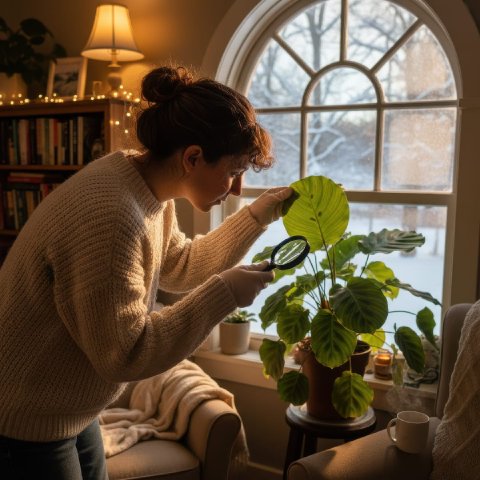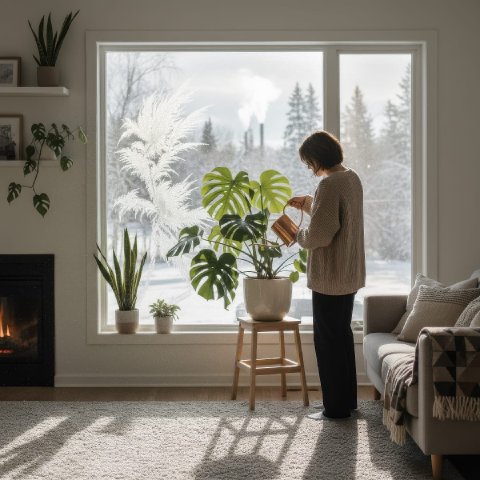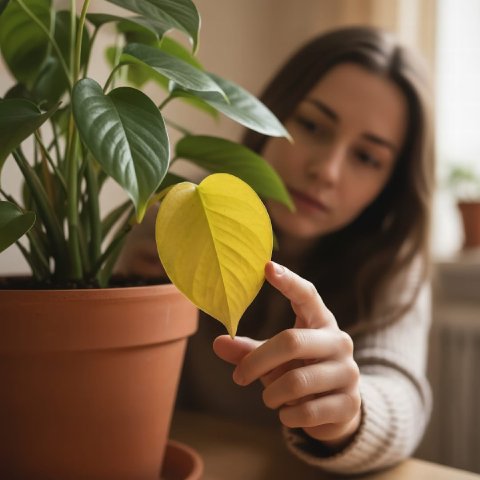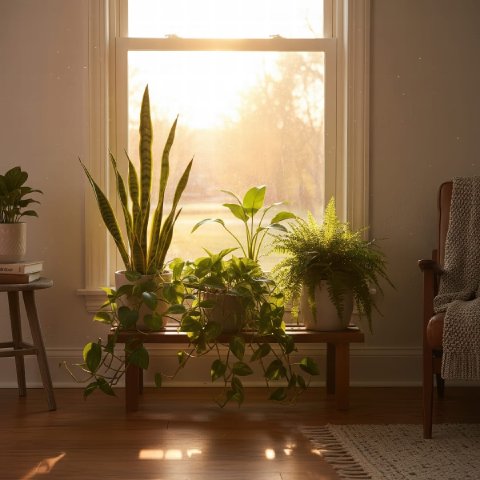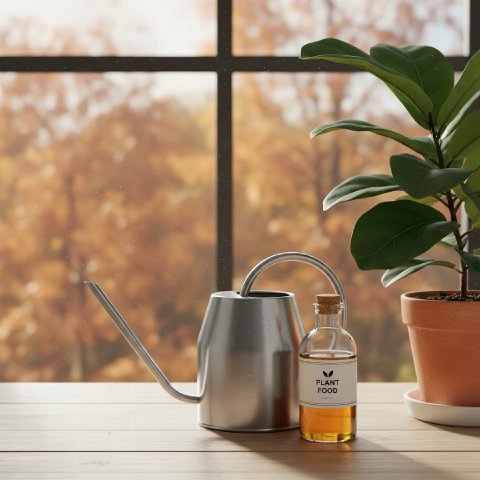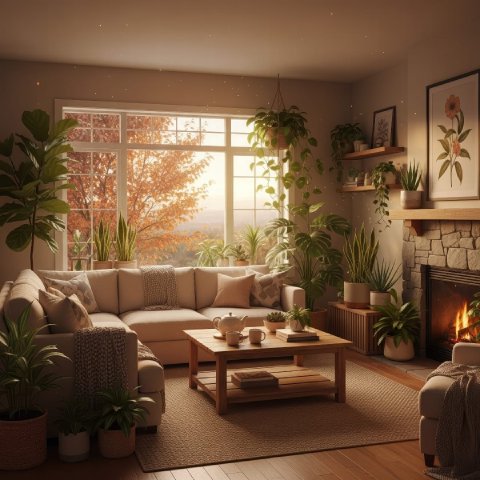🪴 In This Guide 🪴
🏡 Transitioning Outdoor Plants Inside
If you gave your houseplants a summer vacation on the patio, autumn is the time to bring them back in. The move should happen before the first frost, ideally when nighttime temperatures start dipping below 55°F (13°C). A sudden move from cool outdoor nights to a warm, dry home can be a shock, so a gradual transition is best if possible.
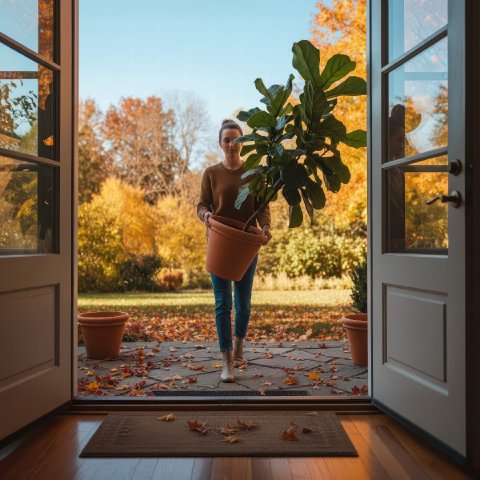
Before they cross the threshold, give them a good rinse with a hose to dislodge any potential pests. This brings us to the most important step: the pest check.
After the move, fine‑tune placement for shorter days with our guide to light for houseplants in autumn.
🐞 The All-Important Pest Check
Your outdoor plants have been co-mingling with nature, and you don’t want to invite any unwanted guests into your home for the winter. Pests like spider mites and aphids can spread quickly among your indoor collection.
How to Inspect Your Plants
Carefully examine every part of the plant. Look under the leaves, in the crevices where leaves meet the stems, and on the soil surface. Some pests are tiny, so be thorough! If you find any, it’s best to treat them before bringing the plant inside. A preventative spray with an insecticidal soap can be a good measure.
If tiny flies appear after moving indoors, adjust moisture habits with autumn watering and fertilizer.
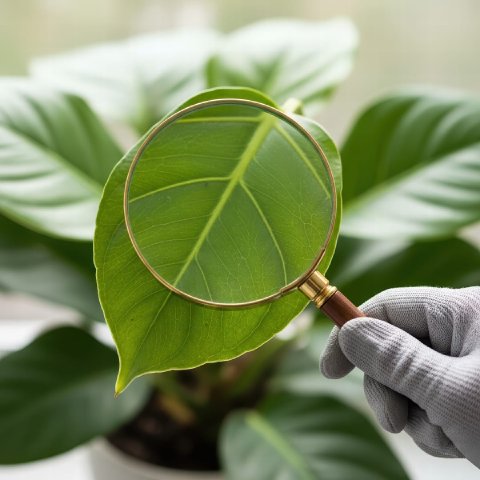
Quarantine is Key
Even if a plant looks clean, it’s a smart practice to quarantine it for a couple of weeks in a separate room away from your other houseplants. This gives you time to spot any pests that may have been hiding.✂️ Fertilizing and Pruning
As your plants prepare for their winter rest, their needs for nutrients and their growth patterns change.
Slowing Down on Fertilizer
Plants are most actively growing in the spring and summer, which is when they need fertilizer. As growth slows in the fall, it’s time to reduce and then stop feeding them. A final feeding in mid-to-late September is a good general rule. Fertilizing a dormant plant can lead to a buildup of unused nutrients in the soil, which can harm the roots.
Learn when and how to taper feeding in Adjusting Watering and Fertilizer in Autumn.
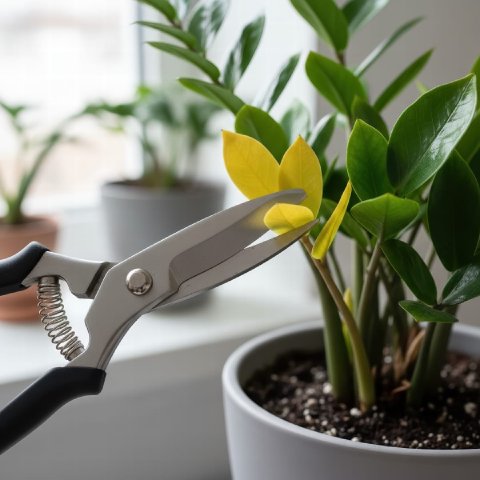
A Good Tidy-Up
Autumn is the perfect time for a bit of pruning. Trim off any yellow or dead leaves so the plant can direct its energy to healthy growth. You can also prune back any leggy stems to encourage a fuller, more compact shape when growth resumes in the spring. This general tidying up not only looks better but also improves air circulation around the plant.🌿 Final Preparation Tips
A few last steps will set your plants up for success.
Clean the Leaves
Household dust can accumulate on leaves, blocking light. Gently wipe them down with a damp cloth to help your plants maximize the weaker autumn sunlight.Find the Right Spot
With the sun lower in the sky, the light in your home will change. Move plants closer to windows-south or west-facing ones are often best-to get them as much light as possible. Just be mindful of cold drafts from windows or hot blasts from heating vents.
If you see yellowing leaves or sudden leaf drop after the move, troubleshoot with Common Autumn Houseplant Problems.
